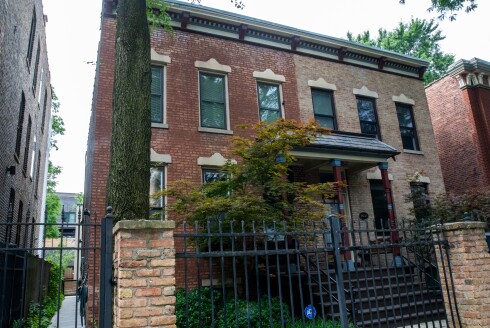Fireworks are a quintessential part of many Chicagoans’ Independence Day celebrations, but this year they could cost more due to President Donald Trump’s tariffs on Chinese imports.
Those costs are also hitting organizers of some big, flashy displays.
Fireworks are illegal for consumer purchase in Illinois, but many suburban park districts and organizations hire pyrotechnic companies or buy from wholesalers to put on Fourth of July shows.
And many Illinois residents drive across the border to Indiana to buy fireworks for their July 4 celebrations.
All of the fireworks on sale at Uncle Sam’s Fireworks Store in Hammond, Indiana, come from China, said co-owner Dan “Dynamite” Mota. Though the shop bought most of its stock before the president’s tariff policies were first imposed in April, some items required replenishing — Roman candles, for example — and were bought more recently. Last year, the candles at Uncle Sam’s went for $6.95 per package. This year, the same pack is $13.95, according to Mota.
“Sales have been down a lot,” he said.
On an average day leading up to the Fourth of July, Mota said he would see 30 to 40 customers come in by the afternoon. This year, he’s lucky to see 10.
Made in China
The current tariff on China is 55%.
Some suburbs averted having to pay more by buying early. The Skokie Park District and village of Northbrook, for instance, say they didn’t pay higher prices for fireworks this year because they signed agreements long before the tariff increases.
But in Evanston, the big Fourth of July fireworks show is costing about $10,000 more this year. It was important to put on a show of the same scale as in the past, though, according to Tracy Alden, president of the nonprofit Evanston Fourth of July Association, which has put on the city’s fireworks show since 1922. Alden said the group had discussions with its board, Evanston Mayor Daniel Biss and city manager Luke Stowe about possibly scaling back but decided not to shorten the show, use less pyro or cut other expenses.
“We did discuss: Do we cut back? Do we eliminate? We may have to in the future because of financials, but we’re committed to keep the fireworks going,” Alden said. “We figured we’d bite the bullet.”
The group relies on donations to keep the July 4 show going. Last year’s fireworks show was Evanston’s biggest yet.
“There’s expectations, and we don’t want to lower those,” Alden said.
For now, Chicago won’t be hit with higher prices for its show. Pyrotecnico is the New Castle, Pennsylvania-based company that puts on the city’s official Fourth of July fireworks celebration and a twice-weekly summer series at Navy Pier.
The group, which also handles fireworks for the Bears, White Sox and Bulls, previously signed a multi-year contract with Navy Pier, locking in the price for several years, according to Pyrotecnico’s director of sales Jon Gesse.
One of the the largest importers of 1.3G fireworks in the U.S., the company stockpiles products from China for years at a time. So while long-term clients may not see price increases due to tariffs, newer clients could, Gesse said. The company has been flexible with redesigning or shortening shows to fit their customers’ budgets.
“We’re hoping for some relief, but it’s looking like our product may be in the 30% tariff range for next year,” Gesse said. “It’s more the replacement cost of what we already have in stock that is going to go up. We rotate approximately a third of our inventory every year.”
Not the first time
There were similar concerns in 2019 as trade talks between the United States and China dragged on. Industry groups then called on officials to exempt fireworks from escalating tariffs.
The American Pyrotechnics Association and the National Fireworks Association reignited the lobbying effort this spring, noting in letters to Trump that fireworks play a crucial role in American celebrations. The groups say the industry mostly is made up of family-owned companies that are often locked into long-term contracts that leave them unable to raise prices to offset higher tariffs.
There are few options for sourcing the more than 300 million pounds of fireworks needed to feed demands. China produces 99% of consumer fireworks and 90% of professional display fireworks used in the United States, according to the pyrotechnics association.
“I think overall it’s the uncertainty,” said Julie Heckman, the APA’s executive director. “Yeah, we have a 90-day pause, but are the negotiations with China going to go well? Or is it going to go sky-high again? You know, triple digits. It’s very hard for a small business to plan.”
Contributing: AP








